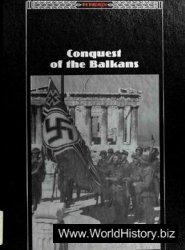Cold War rivalry was territorial as well as ideological. Influence was sought in particular territories and regions - Europe at first, but then Asia and Africa. This was not really rivalry over resources or raw materials despite many statements to the contrary. Each side was plentifully endowed with strategically important commodities, including oil. What the Soviets and their dependants could tap within their vast land mass, the Western allies.
1. The Cold War as a Fordist competition: crude steel output, 1945-1970 (in thousands of metric tons)
Note:. Steel tonnage was widely considered as a proxy indicator of industrial prowess, as well as being a basic input into industrial products. Polish data suggests the partial industrial transformation of Eastern Europe. During successive decades, steel output moved to newly industrializing countries and stabilized in Europe and North America. Global steel output in 2006 was 1,250 million metric tons, over twice the world total of 595 million tons in 1970, of which China produced over a third (422.3 million tons), India 50 million tons, and South Korea 48.5. Sources:. B. R. Mitchell, European Historical Statistics, 1750-1970, abridged ed. (London: Macmillan, 1978), 223-28; American output from Historical Statistics of the United States (New York: Cambridge University Press, 2006), vol. IV, 636 (converted from short tons to metric tons); 2006 data from Steel News of the Iron and Steel Statistics Bureau (London), and special assistance from Arnulf Grubler of the International Institute for Applied Systems Analysis, Laxenburg, Austria.
Effectively controlled in areas of former colonial dependency or longstanding special access. The confrontation between the Soviets’ coalition and the Americans’ developed rather as a struggle for territorial and political control in the wake of German and Japanese military collapse in Europe and Asia.
The urgent economic task facing both sides in the postwar era was recovery from the damage of World War II. But this was an asymmetric task. The Soviet Union had lost 20,000,000 or more of its 1939 population of about 170,000,000. While a great deal of economic plant had been moved to the Urals, western Russia was physically devastated. The estimate of real national output in 1945 was about 80 percent of the 1940 gross national product.50 In contrast, the United States economy had grown during the war; it had mopped up the 15 percent unemployment that still idled so many workers as late as 1940. Insofar as the Soviets wished to maintain any sort of legitimacy in the East European nations where their armies were to remain, the Kremlin had also to assure these countries some prospect of recovery.
In the European arena Germany appeared the key to the job for both sides. As a political conflict, the Cold War originated as a struggle against the postwar exclusion of non-Communist political leaderships in Poland and Eastern Europe. As an economic contest, the Cold War originated as a struggle for Germany. Under the inter-Allied reparations program discussed at the Yalta Conference in February 1945, German industry beyond the minimum needed for survival was set to be dismantled and its productive resources distributed to both East and West. This would allegedly avoid the protracted annuities that Versailles had stipulated and which had remained a source of continued friction throughout the 1920s. But reparations proved a wedge for conflict after World War II as well. At Yalta, the Allies named a reparations sum of $20 billion, half of which could be claimed by the Soviet Union, but at Potsdam in July the new US president - less moved than his predecessor by the emotional tug of the joint war effort - claimed the old figure had never been binding and sought to fix a new total of $10 billion. The compromises finally worked out stipulated that German productive capacity would be rolled back to the level of 1932 and that excess industrial plant would be dismantled for reparation. Each occupying power would draw 75 percent of its reparations from these surpluses in its own zone, which left the Soviets a free hand in the East. Additionally, the Western powers would provide 10 percent of their reparation assets to the Soviets free and clear, and a further 15 percent in return for agricultural commodities to be provided from the East. Critics of reparation and dismantling - in the United States increasingly business leaders and Republican senators - complained that the projected ceilings on German output would permanently hobble its economy. Secretary of State James F. Byrnes reassured a German audience at Stuttgart on September 2, 1946, that Washington had no intent to prevent their economic recovery - the first major public revision of strict occupation guidelines.
By this time, the reparation agreement was disintegrating in any case amidst recriminations on each side. In May 1946, General Lucius Clay ordered a stop to reparation deliveries to all recipient countries, and the Americans sought to gain a greater voice in policy in the industrial regions of western Germany administered by the British. The British likewise found paying for their zone a growing strain and agreed to the creation of a joint economic administration - "Bizonia" or the Bizone - to come into effect at the beginning of 1947. Germans were put in charge of its rudimentary economic administration, and its Economic Council (Wirtschaftsrat) would become the predecessor of the West German parliament. The French opposed American efforts to relax the constraints on German production. At the Moscow and London meetings of the Council of Foreign Ministers of April and December 1947, the Americans refused to make any further concessions on constructing the unified German institutions that the Soviets pressed for - fearing they were intended to serve only as a fulcrum for Communist influence in the West.
Thus the united economic area that Germany had once constituted disintegrated, and two economic realms would emerge. The UN’s Economic Commission for Europe to be headed by Gunnar Myrdal would seek to counter the trend and to preserve a united economic space, but Myrdal tended to be held in contempt by policymakers in Washington and London. The Allies had supposedly acted on behalf of a reunited Europe at Yalta, but the reparation agreement at Potsdam left each zone to be milked by its respective occupying power. Growing distrust about political intentions - Washington’s conviction that the Soviets wanted to dominate all of Germany; Moscow’s conviction that Washington preferred to partition Germany - turned out to be well founded.
The division of Germany meant the economic division of Europe more generally. A whole series of incremental decisions from 1945 through 1948 led to that result, but the most dramatic and far-reaching was American organization of the European Recovery Program (ERP), or the Marshall Plan, announced after the failure of the spring 1947 Moscow Conference. By that time, it had become evident that Europe’s dollar deficit, which meant its need for United States commodities, remained an urgent problem despite the effort to assure postwar liquidity by the Bretton Woods agreements negotiated in the summer of 1944 and significant relief payments through UNRRA (the UN Relief and Rehabilitation Administration). Britain could not sustain anti-Communist assistance in Greece; the French, Belgian, and Italian Communist Parties were making inroads among a working class whose standard of living seemed threatened; Germany’s currency was no longer serving to coax goods into the market.
What was the magnitude ofAmerican assistance? Over four years, the ERP authorized almost $14 billion of assistance. When it began in 1948, the first authorization (comprising first so-called Interim Aid, then assistance under the European Recovery Program per se) amounted to about 2% of US gross domestic product; by 1951, it was closer to 1%. This was a significant transfer of resources, but not at all disabling. (Americans had already been spending 40 to 45 percent of GDP on war-related expenses by 1944-45.) As for the recipient countries, the sums received had a qualitative more than a quantitative impact: they alleviated balance-of-payments or budgetary constraints. The national income of European countries tended to recover the levels of 1938 or 1939 by 1948. Getting back to prewar levels of national income, however, did not mean that national wealth destroyed, damaged, or depreciated in wartime was reconstituted in five years. Infrastructure had to be rebuilt and, after that, housing needed to be repaired; ruins, shabby transport, and makeshift accommodation persisted for years afterward. Long-accumulated private savings held as monetary assets often for the next generation (bank accounts, bonds) were diminished either deliberately in monetary reforms, as in Belgium, West Germany, and Eastern bloc countries, or by living with inflation. Perhaps most farsightedly, Washington agreed to help finance the dollar pool needed to let the Europeans return to partial currency convertibility through the European Payments Union (EPU) during the 1950s. By the time EPU was wound up in 1958, it was becoming clear that, against all expectations, the international dollar shortage was becoming a dollar glut. The era of a weakening but tethered dollar from 1958 to 1973 - at which latter date the Nixon administration accepted a regime of floating exchange rates - may have contributed to the unprecedented length ofreal economic expansion throughout the non-Communist world. At the same time, the outflow of dollars helped set the stage for the decade of inflation in the 1970s and ultimately discredited the neo-Keynesian assumptions that had justified the welfare-state policies and monetary expansion of the previous quarter-century.
All in all, the economic initiatives on both sides of the Iron Curtain profoundly changed Europe’s economic geography and its economic institutions. The European Recovery Program helped confirm the division of Europe, but placed the major onus on Moscow for this result. In theory, Marshall Plan aid was offered to all European states that might join in a cooperative effort to increase international trade and output. Moscow planners felt this must undermine their own central planning and domination of East European economies and quickly withdrew cooperation. Only the Czech coalition government would stay until the fall of 1947 and pay for this autonomy with a Communist takeover in February 1948.
Within Western Europe, the Recovery Program - organized through the new autonomous European Cooperation Agency (ECA) - became an agency for transformative thinking, especially from the fall of 1949 on when Paul Hoffman - facing a congressional fight for renewed authorizations and seeking a dramatic initiative - called for an admittedly ill-defined “integration” among the West European recipients. The ECA’s Washington economists, trained just before the war as interventionist ideas flourished, continually urged a more coordinated and even planning-type intervention on the Europeans. The ECA itself spurred recipient countries - organized initially as the Organization for European Economic Cooperation (OEEC), then as the Organization for Economic Cooperation and Development (OECD) - to develop common Western criteria for measuring economic performance, including better national income statistics. The North Atlantic Treaty Organization (NATO) and the Mutual Security Administration (MSA) that succeeded the Recovery Program pressed statistical coordination even further when the NATO Temporary Council Committee of the fall of 1951 began to measure members’ military expenses as a ratio of their gross national product in order to overcome lagging rearmament.
In a long-run perspective, the postwar transformation of European economic space served also to restructure two major prewar trade and investment relationships: the German-Russian and the British-American
Exchanges. East Germany ended up taking on most of the burden involved in reconstructing the first of these relations. It was a territory to be stripped for so-called war booty, then for reparations. As the East-West rift deepened, however, the Soviets decided to take East German industrial output as reparations, rather than its equipment, perhaps up to 40 percent during 1947-48. Throughout its existence, East Germany and later the German Democratic Republic (GDR) would remain the major supplier of machine tools to the Soviet Union. Moscow further sought to establish an integrated state socialist economic bloc that could dispense with imports from the West, and the countries they controlled zealously replicated Soviet-style central planning and collectivized industry and land, with Polish farms remaining the great exception.
The Soviet domination of Eastern Europe and East Germany and the multiyear American program for West European aid meant that there would be no socialism in just one country - and no capitalism either. Within the two blocs, participating states strove for greater amounts of trade and exchange. Just as the Marshall Plan would seek to reconstruct multilateral Western trade, the Soviets would establish the Comecon (Council for Mutual Economic Assistance, CMEA) for the planned economies. In effect, the Comecon was designed to offer an alternative for the economies to which Moscow denied access to Marshall Plan aid; it thus had to establish its own intrabloc trade in lieu of dollar purchases, but it was to remain a region of second-class manufactures, at times exploited by the Soviet Union and at times subsidized with inexpensive oil and raw materials.
British-American economic relations also changed profoundly. While the Soviets could treat Germany as a defeated power, Britain and the United States were victorious allies. London, moreover, retained a privileged relationship with its imperial dependencies and dominions. Nor was London alone in drawing on such vestiges of empire. British-American economic relations before the war had been troubled by the 1931 Ottawa Agreements that had put the Commonwealth countries, including Canada, behind new tariff walls. Lend-lease assistance had been granted under the condition that after the war such trade discrimination would be dismantled. But Britain faced acute balance-of-payments strains. The country had fought its East Asian war by levies on its Suez-to-Singapore dependencies (or the businesses and plantations within them). In return for materiel, the Exchequer had credited its suppliers with sterling accounts in London. After the Bretton Woods agreements and the negotiation of the American loan, these balances were supposed to be made convertible into dollars. United States officials tended to believe that British pretensions outweighed its real economic resources and that London should ultimately shed the imperial privileges or monetary immunity it sought to retain. Accepting convertibility of sterling (that is, ending what UK policymakers described as a two-world system) would compel the British, so the Americans were convinced, not without reason, to strengthen their own industrial resources. Still, pressure from Washington was only intermittent. Britain retained an important voice in the reorganization of Ruhr resources, was fighting putatively Communist guerrillas, briefly in Greece and then in Malaya, and might help stabilize Iran and Arab lands. The British had friends among the State Department and other elites, but Republican congressmen, who controlled the House after 1946, fretted about the supposed indulgence of a semi-socialist welfare state.
Were the powers partners or rivals? The answer, repeatedly vouchsafed but only after episodes of hard bargaining, was partners of a kind.51 Thus, the United States extended assistance first by a postwar credit of $3.75 billion and then by granting Britain the largest single share of Marshall Plan authorizations. Simultaneously, however, American Treasury officials pressed Britain toward a quickly rescinded attempt in July 1947 to restore the convertibility of sterling, and two years later toward significant devaluation of the pound in September 1949. On the other hand, ERP and State Department officials put less pressure on London; they envisaged Britain as an important partner in containment; neither did they object so viscerally to expensive welfare-state commitments. The ECA agencies that administered the ERP authorized Britain to use its Marshall Plan allocations to reduce its overall debt burden. Similar considerations led Washington to tolerate the French use of Marshall Plan funds to help balance their budgets, lest fiscal austerity increase the domestic role of the Communists and undermine the French military effort in Indochina.
The upshot of all these arrangements between 1944 and 1973 was that Washington first funded, then replaced, British and French imperial commitments, often in the cause of containing Communist challenges in the Third World. Direct loans to London and Paris, then Marshall Plan aid and military assistance, helped Paris and London pay for their forlorn wars in Asia and Africa. Increasingly, Washington intervened directly without intermediaries. In effect, the United States became the de facto heir to the "Third World" empire, now exercised through economic influence and selective military or covert action. Some sites were new, such as Iran, some old, as in Central America.
From 1950 on, nationalists throughout the Middle East would be seeking to claw back the profits of Western oil companies. The US Arabian-American consortium, ARAMCO, its position reinforced by Franklin Roosevelt’s cultivation of Ibn Saud, conceded the Saudi claim to half their oil revenues, in part because the American firms were entitled to claim equivalent tax deductions at home. The British Anglo-Iranian Oil Company, with its great offshore refinery at Abadan Island, enjoyed no equivalent tax exemption and resisted an equivalent bargain. When the leader of the nationalist party coalition, Muhammed Mossadeq, successfully urged Iranian nationalization of the industry as of May 1951, the Truman administration initially dissented fTom London’s ideas for a military response. But the Republicans who took power in 1953 had different sympathies, and sponsored a Central Intelligence Agency intervention that ousted Mossadeq and restored the young Reza Shah Pahlavi from his brief exile. Although the nationalization remained in effect, marketing of the oil was turned over to an international consortium in which American firms now participated. The new status quo lasted for another twenty years - providing cheap energy for the West, guaranteeing profits for the oil firms, confirming Iran’s pro-American orientation, and reining in any British dreams of reexerting imperial methods - at least until London faced the next nationalization crisis over Suez two and a half years later.
Rivalries over oil are often identified as a major stake in the Cold War. But the politics of oil perhaps exerted less impact as a stake in the Cold War than as a major resource that the two superpowers used to organize their respective blocs. In 1973-74, when the era of cheap energy threatened to end, and the control of prices was at stake, another Republican administration managed to reassert American interests through monetary hegemony which, though weakened after 1971, could not easily be replaced. Since payment to members of the Organization of the Petroleum Exporting Countries was collected in dollars, Americans did not face the exchange constraints their allies did. American firms collected oil revenues for Middle Eastern producers who held them in dollarized assets. Similarly, as the global price of oil rose sharply in 1974, the Soviets used their vast reserves to subsidize their Comecon partners and assure their continued adherence to the Communist economic bloc. Control of oil and scarcity of oil thus served the primacy of each superpower.
Raw materials were hardly the only stake in the Third World. Certainly American and British oil firms had powerful interests in the Middle East, as did the United Fruit Company in Guatemala, where Americans worked to unseat the reformist Guatemalan premier, Jacobo Arbenz, in 1954. So, too, did the Belgian Union Miniere, which supported the secessionist Moise Tshombe in Katanga province of newly independent Zaire in 1960-61, while Washington helped to eliminate the radical premier Patrice Lumumba. But the stakes in the regions described successively as "backward," then "underdeveloped,” then "less developed,” then just as "developing,” transcended their commodities. From Lenin on, Communist leaders envisaged that the colonial regions would be a decisive arena of ideological conflict. North-South contention would influence East-West outcomes. As the Cold War became global, each side sought to forestall the influence of its adversary from becoming decisive in the postcolonial world.
Hence, alongside the colonial wars that would ravage successive societies, a system of competitive aid structures would emerge by the 1950s. The Egyptian leader, Gamal Abdel Nasser, would turn to the Soviets to help build the Aswan dam (and nationalize the Anglo-French Suez Canal Company) when the West walked away from the project in 1955. After West Germany recovered formal foreign-policy autonomy in that year, the two Germanies would offer assistance to the Third World, the Federal
Republic in large part to keep quarantining the GDR as its "Hallstein Doctrine” stipulated. China entered the arena in the 1960s in large part to contest the Soviet Union. As for the African states, no matter how inclined toward socialism, they also sought to balance their suitors. The Western powers, moreover, had the capacity to vastly outweigh the credits and grants that their Eastern rivals offered. From 1954 through 1963, the Soviet Union opened credits of $4.94 billion to the "developing world” and made payments of $1.62 billion; OECD payments reached almost $23 billion.52
Looking back at the economic results achieved, it might be asked in what respects the recipient countries benefited from the aid received. Funds poured into mines and extractive industries did not advance manufacturing capacity; ambitious leaders could use the aid to reinforce systems of personal rule that reinforced tribal loyalties and clientelism; the big projects that donors assisted often misallocated resources; farming could be discouraged as agricultural prices were held down to subsidize the new industrial labor forces. Too often, despite the well-meaning effort of so many individuals who labored to improve the health and welfare and progress of Africans and others on the margins of subsistence, the stake of aid was not welfare but control.




 World History
World History









